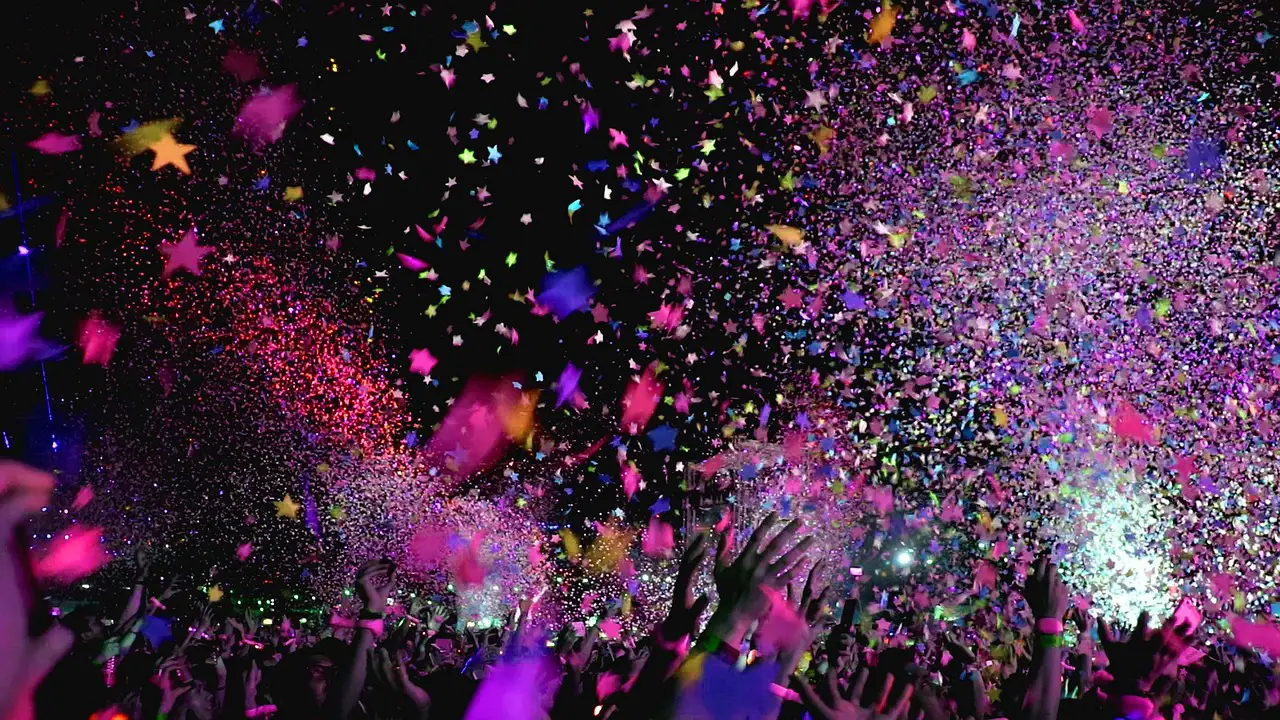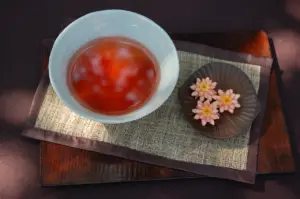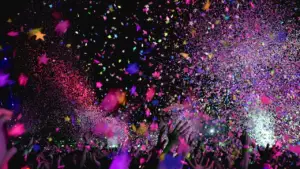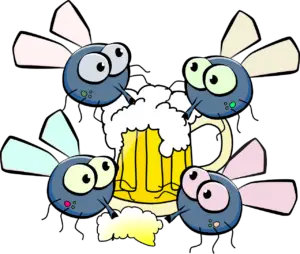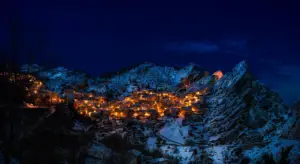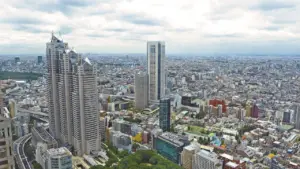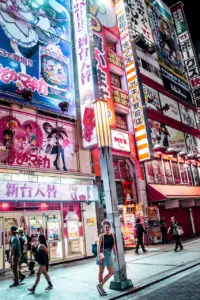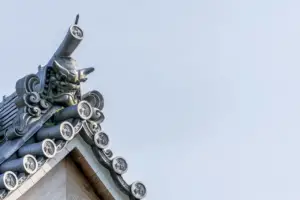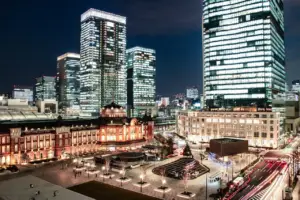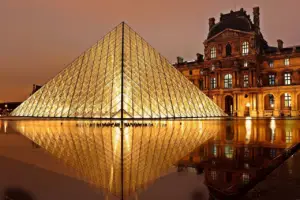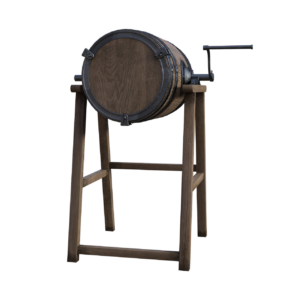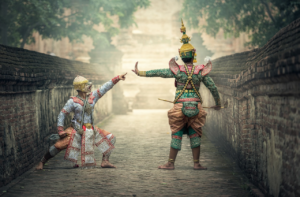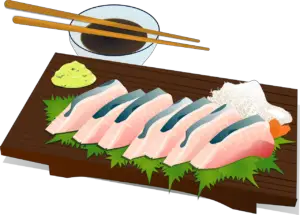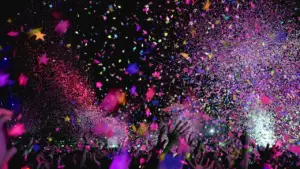Japan is renowned for its winter festivals that showcase its rich cultural heritage and breathtaking snowy landscapes. These festivals are a perfect opportunity to experience the beauty of winter in Japan while indulging in the country’s unique traditions, food, and entertainment.
From the famous Sapporo Snow Festival to the less-known but equally captivating Yokote Kamakura Festival, Japan offers an array of winter festivities that are sure to leave visitors spellbound.
The Sapporo Snow Festival, held in February every year, is the largest winter festival in Japan and draws millions of visitors from across the globe. The festival features magnificent snow and ice sculptures that are created by local and international artists.
The Otaru Snow Light Path Festival, on the other hand, is a more intimate affair that takes place in the charming town of Otaru. Visitors can stroll along the snow-covered streets while admiring the lanterns that illuminate the town’s historic buildings and canals.
The Hirosaki Castle Snow Lantern Festival is another must-visit festival that showcases the stunning Hirosaki Castle adorned with countless snow lanterns.
The Yokote Kamakura Festival, held in Akita Prefecture, is a unique event where visitors can experience the traditional life of rural Japan while admiring the snow huts that are decorated with candles and lanterns.
Finally, the Onsen Snow Festival offers visitors an opportunity to soak in hot springs while admiring the snow sculptures that are illuminated by the night sky.
With so many captivating winter festivals to choose from, Japan is the perfect destination for those seeking snowy delights.
Key Takeaways
- Japan offers a variety of captivating winter festivals, showcasing its rich cultural heritage and snowy landscapes.
- Visitors can experience traditional life in rural Japan, witness stunning snow sculptures and lanterns, and enjoy unique performances such as Yosakoi dance and Taiko drumming.
- Winter festivals provide an opportunity to indulge in Japan’s unique traditions, food, and entertainment.
- Japan is the perfect destination for those seeking snowy delights and a memorable winter holiday experience.
Sapporo Snow Festival
The Sapporo Snow Festival is an internationally acclaimed winter festival held annually in Sapporo, Japan. It is one of the largest and most popular winter festivals in the country, attracting millions of visitors from around the world.
The festival features elaborate snow and ice sculptures, created by talented artists and sculptors from all over Japan and other countries, showcasing their artistic skills and creativity. The festival takes place over a week in February and features various events, including snow and ice sculpture contests, snow slides, and live music performances.
Visitors can also indulge in local delicacies, such as hot pot dishes and grilled seafood, to keep themselves warm in the chilly weather. The Sapporo Snow Festival is a must-see event, providing a unique and captivating experience for anyone who loves winter and the magical world of snow and ice.
Otaru Snow Light Path Festival
The Otaru Snow Light Path Festival is a winter event that takes place in Otaru, Hokkaido, Japan. Visitors can stroll along the romantic canal while admiring the glowing snow lanterns that illuminate the path.
In addition, the festival also offers the opportunity to try the famous Otaru glasswork, which is a traditional craft in the area.
Stroll Along the Romantic Canal
One can explore the charming winter scenery of Otaru by taking a leisurely walk along the romantic canal, which is illuminated by thousands of glittering snow candles during the Otaru Snow Light Path Festival. This festival is held annually in February and attracts visitors from all over the world who come to witness the breathtaking display of lights and snow sculptures.
The Otaru canal, which was once used for transporting goods, is now a popular tourist destination. The canal is lined with old warehouses that have been converted into shops, cafes, and restaurants. The illuminated snow candles create a mesmerizing ambiance that adds to the romantic atmosphere of the canal.
Visitors can experience the festival by taking a stroll along the canal, enjoying the view of the snow sculptures, and trying out local delicacies that are offered by the food vendors.
Admire the Glowing Snow Lanterns
Visitors can witness the magical glow of snow lanterns in Otaru during the Snow Light Path Festival, creating a serene and enchanting atmosphere for all to enjoy. The festival takes place in February and attracts tourists from all over the world. The festival first began in 1999, and since then, it has become one of the most popular winter festivals in Japan.
The snow lanterns are made by local residents, who carve out the snow and place candles inside. They are then arranged along the canal, creating a beautiful illuminated pathway. Visitors can walk along the canal and admire the glowing lanterns, creating a truly magical experience. In addition to the lanterns, there are also ice sculptures, food stalls, and other activities for visitors to enjoy. The Snow Light Path Festival is a must-see for anyone looking to experience the beauty of winter in Japan.
| Month | Festival |
|---|---|
| February | Snow Light Path Festival |
| February | Sapporo Snow Festival |
| February | Otaru Snow Light Path Festival |
| February | Lake Shikotsu Ice Festival |
| January-February | Yokote Kamakura Snow Festival |
Try the Famous Otaru Glasswork
To fully appreciate the artistry of Otaru Glasswork, exploring the workshops and galleries of this charming town is a must. This traditional craft dates back to the late 1800s, and Otaru has become famous for its glasswork, attracting countless visitors every year.
The crystal-clear glassware is made using a delicate technique known as ‘Edo Kiriko,’ which involves carving intricate patterns onto the surface of the glass to create an exquisite finish. Visitors to Otaru can witness the glassmaking process up close by visiting one of the numerous workshops in town.
These workshops offer a glimpse into the skill and precision required to create these beautiful glass pieces. Afterward, be sure to visit the many galleries where you can purchase unique souvenirs to take home. From delicate glass figurines to beautiful drinking glasses, Otaru glasswork is a must-see for anyone visiting the town.
Hirosaki Castle Snow Lantern Festival
The Hirosaki Castle Snow Lantern Festival is a captivating winter festival that takes place in Japan.
Visitors can explore the illuminated castle grounds while admiring the beautiful snow lanterns that decorate the area.
In addition, traditional performances are also held, providing a unique cultural experience for those in attendance.
Visit the Illuminated Castle Grounds
Illuminated Castle Grounds in Japan during winter festivals are a captivating display of vibrant lights, which transform the castle’s serene ambiance into a lively and magical wonderland.
The Hirosaki Castle Snow Lantern Festival showcases the beauty of the castle and its surrounding gardens, which are illuminated with thousands of LED lights. The event usually takes place in early February, where visitors can marvel at the stunning light displays and enjoy the snow sculptures that have been carefully crafted by local artists.
The illumination of the castle grounds is a testament to the beauty and splendor of Japanese winter festivals. Visitors can witness the transformation of the castle and its surroundings, as the lights create a festive atmosphere that is sure to delight the senses.
The Hirosaki Castle Snow Lantern Festival is a must-see event for anyone who wants to experience the magic of winter in Japan.
Admire the Beautiful Snow Lanterns
The intricate designs of the snow lanterns at the Hirosaki Castle Snow Lantern Festival showcase the creativity and skill of local artists. The festival is held annually in February, where visitors can witness the stunning beauty of the illuminated snow lanterns that line the castle grounds.
The lanterns are constructed using compacted snow, and their designs range from traditional Japanese motifs to modern pop culture icons. As visitors walk through the castle grounds, they will be mesmerized by the enchanting atmosphere created by the glowing lanterns.
The festival offers a unique experience for visitors to explore Japanese culture and traditions, as well as the artistic talents of the local community. The Hirosaki Castle Snow Lantern Festival is a must-visit attraction for anyone seeking a winter wonderland adventure in Japan.
-
The festival features hundreds of intricately designed snow lanterns, which are illuminated at night, creating a magical ambiance.
-
Visitors can witness traditional Japanese snow sculptures, such as the famous Seven Lucky Gods and the mythical creatures of Japanese folklore.
-
The festival also features live music performances, traditional Japanese food stalls, and cultural activities such as tea ceremonies and calligraphy demonstrations.
Watch the Traditional Performances
After admiring the mesmerizing snow lanterns, the winter festival in Japan offers a chance to witness traditional performances. These performances are an integral part of Japanese culture and showcase the country’s rich heritage. From folk dances to martial arts, these performances are a treat to watch for tourists and locals alike.
One such traditional performance is the ‘Yosakoi’ dance. It originated in the southern city of Kochi in the 1950s and has since spread to different parts of Japan. The dance involves a group of dancers dressed in colorful costumes and performing energetic moves while carrying naruko, small wooden clappers.
Another popular performance is the ‘Taiko’ drumming, which involves a group of drummers playing large traditional Japanese drums. These performances are a great way to experience Japan’s vibrant culture and immerse oneself in the local traditions.
Yokote Kamakura Festival
During the Yokote Kamakura Festival, visitors can experience the traditional winter customs of Akita prefecture, including the creation of igloo-like structures made of snow and the lighting of lanterns inside. Held annually on February 15th and 16th, the festival is a celebration of the region’s rich cultural heritage.
The kamakura, or snow huts, are built by hand using compacted snow, and visitors are welcome to enter and warm themselves by the charcoal fire burning inside. The lanterns, made of thin paper and bamboo, cast a soft and warm glow that adds to the magical atmosphere of the festival.
The Yokote Kamakura Festival has a long history, dating back over 400 years to a time when the region was plagued by heavy snowfall. In an effort to keep warm and entertained during the long and harsh winter months, the locals developed these snow huts and the festival around them.
Today, the festival attracts visitors from all over Japan and beyond, who come to experience the unique customs and traditions of the region. In addition to the kamakura, there are also food stalls selling traditional winter treats and performances of local folk songs and dances.
Onsen Snow Festival
Visitors to Akita prefecture can indulge in a luxurious winter experience at the Onsen Snow Festival, where they can enjoy the unique combination of hot springs and snow sculptures.
This festival takes place in the charming town of Kuroishi, which is renowned for its natural hot springs.
During the festival, the town transforms into a winter wonderland, with over 100 snow sculptures and illuminations adorning the streets.
The Onsen Snow Festival offers visitors a chance to soak in the hot springs while admiring the stunning snow sculptures.
Some of the highlights of the festival include the snow slide, where visitors can slide down a 50-meter-long slope made entirely of snow, and the concert held on the final day of the festival.
Overall, the Onsen Snow Festival is a perfect blend of winter delights, offering visitors a chance to relax and indulge in the hot springs while admiring the beautiful snow sculptures.
Frequently Asked Questions
What is the history behind each of these winter festivals?
The history behind each winter festival in Japan varies depending on the festival.
For example, the Sapporo Snow Festival began in 1950 as a local event, and has since grown into a major international festival. The festival was started by a group of high school students, who built six snow sculptures in Odori Park.
On the other hand, the Yokote Kamakura Festival has been a tradition in Akita Prefecture for over 400 years. The festival involves building kamakura, or igloos made of snow, in which participants can sit and enjoy sweet sake. The origins of the festival are said to be a combination of Shinto and Buddhist beliefs, with the kamakura symbolizing a place where the gods can come and rest.
Similarly, the Nozawa Onsen Fire Festival has a long history, dating back to the Edo period. The festival is a purification ritual, in which wooden shrines are burnt as an offering to the gods.
Overall, each winter festival in Japan has its own unique history and cultural significance.
Are there any specific cultural traditions or rituals associated with these festivals?
Winter festivals in Japan are deeply rooted in cultural traditions and rituals. These festivals are celebrated to honor and appease the gods, bring good luck and prosperity, and to mark the end of winter.
The Sapporo Snow Festival, for example, is known for its impressive snow sculptures that depict popular characters and landmarks from around the world. The festival is also marked by the lighting of snow lanterns, a tradition that dates back to the Edo period.
Similarly, the Kamakura Festival in Yokote involves building snow houses or igloos called kamakura, which are decorated with candles and used as a place for locals to gather and enjoy rice cakes and warm sake.
Another popular festival, the Otaru Snow Light Path Festival, is celebrated with the lighting of thousands of candles that line the streets and canals of the historic town.
These festivals are not only a celebration of winter, but a way for the Japanese people to connect with their cultural heritage and traditions.
How do locals prepare for and celebrate these festivals?
During the winter months, locals in Japan prepare for and celebrate various festivals with great enthusiasm.
The preparations for these festivals involve cleaning and decorating their homes, purchasing traditional foods and clothing, and practicing specific rituals and customs.
For example, during the Sapporo Snow Festival, locals spend months carving intricate snow sculptures that are then displayed for visitors to admire.
Similarly, during the Kamakura Festival, locals create small igloos out of snow and place candles inside them to create a warm and cozy atmosphere.
Many festivals also involve traditional dances, music, and performances, all of which are enjoyed by both locals and visitors alike.
Overall, these winter festivals are a significant part of Japanese culture and are celebrated with great zeal and passion.
What kind of food and drinks are typically served at these festivals?
Typically, food and drinks served at winter festivals in Japan are traditional and seasonal. Popular dishes include hot pot, such as nabe, which is a communal dish cooked at the table, and grilled fish on skewers, called yakitori.
Other festival foods include steamed buns with a variety of fillings, such as pork and vegetables, and sweet snacks like mochi, a sticky rice cake. Warm drinks like sake, a traditional Japanese rice wine, and amazake, a sweet fermented rice drink, are also popular to keep festival-goers warm in the cold winter weather.
These traditional foods and drinks add to the festive atmosphere and create a unique cultural experience for visitors.
Are there any other winter activities or attractions in the surrounding areas that visitors can enjoy?
Visitors to the winter festivals in Japan have an abundance of activities to enjoy beyond the festivals themselves.
For example, many of the festivals take place in areas that offer skiing and snowboarding opportunities, including the famous Niseko ski resort in Hokkaido.
Additionally, visitors can take part in traditional Japanese activities such as hot springs or onsens, which are particularly popular during the winter months.
Other popular winter attractions include ice skating at outdoor rinks, snowshoeing, and even snowmobiling.
Visitors can also take advantage of the opportunity to try unique winter foods, such as hot pot dishes and grilled seafood, which are especially popular during the winter months.
Overall, visitors to Japan during the winter months can enjoy a wide range of activities and attractions beyond the captivating winter festivals.
Conclusion
In Japan, winter is a time of celebration, and the country boasts a diverse range of festivals that showcase the beauty of the season. Visitors to Japan during this time can experience the stunning beauty of snow and ice, as well as the warmth of the country’s rich cultural traditions.
Among the most captivating winter festivals in Japan are the Sapporo Snow Festival, the Otaru Snow Light Path Festival, the Hirosaki Castle Snow Lantern Festival, the Yokote Kamakura Festival, and the Onsen Snow Festival.
The Sapporo Snow Festival, the largest of its kind in Japan, features massive sculptures carved from ice and snow, while the Otaru Snow Light Path Festival is known for its romantic atmosphere, as visitors stroll along snow-lined streets illuminated by candles.
The Hirosaki Castle Snow Lantern Festival showcases the beauty of traditional Japanese lanterns, while the Yokote Kamakura Festival features igloo-like snow huts that house small shrines. Finally, the Onsen Snow Festival offers visitors the chance to relax in natural hot springs while enjoying stunning views of snow-covered mountains.
Overall, Japan’s winter festivals offer visitors a chance to experience the beauty of the season in a uniquely Japanese way. From massive snow sculptures to traditional Japanese lanterns, these festivals are a celebration of both the natural beauty of snow and ice, and the warmth of Japanese culture.
Whether you’re looking for romance, relaxation, or simply a chance to experience something new, Japan’s winter festivals are an unforgettable experience.


